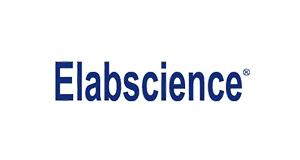Recombinant BLyS/TNFSF13B/BAFF Monoclonal Antibody
Recombinant BLyS/TNFSF13B/BAFF Monoclonal Antibody
Artikelnummer
ELSAN300173P-100
Verpackungseinheit
100μL
Hersteller
Elabscience Biotechnology
Verfügbarkeit:
wird geladen...
Preis wird geladen...
Target Synonym: UNQ;PRO;ZTNF;TNF- and APOL-related leukocyte expressed ligand;TNFSF;TNFSF13B;BAFF;BLYS;CD257;DTL;TALL-1;TALL1;THANK;TNFSF20;TNLG7A;ZTNF4;Tumor necrosis factor ligand superfamily member 13B;B lymphocyte stimulator;B-cell-activating factor;Dendritic cell-derived TNF-like molecule;TNF- and APOL-related leukocyte expressed ligand 1;UNQ401;PRO738;BAFF;TNFSF13b;TALL-1;ApoL related ligand TALL 1;B cell Activating Factor;CD 257;CD257 antigen;Delta BAFF;Dendritic cell derived TNF like molecule;DTL precursor;soluble form;TALL 1;TN13B;TNF and APOL related leukocyte expressed ligand 1;TNF homolog that activates apoptosis;TNF homolog that activates apoptosis NKFB and JNK.;Tumor necrosis factor (ligand) superfamily member 13b;Tumor necrosis factor ligand 7A;Tumor necrosis factor ligand superfamily member 20;Tumor necrosis factor like protein ZTNF4;Tumor necrosis factor superfamily member 13B
Background: BAFF, a member of the TNF superfamily of proteins, is a homotrimeric transmembrane protein, which is cleaved to produce a soluble cytokine. BAFF may also further oligomerize into 60-mer structures. BAFF is expressed by monocytes, neutrophils, macrophages, dendritic cells, activated T cells, and epithelial cells. BAFF plays a key role in B cell development, survival, and activation. BAFF binds to three distinct receptors, BAFF-R, TACI, and BCMA. These receptors are differentially expressed during B cell development and among B cell subsets. While BAFF-R and BCMA bind to the homotrimeric form of BAFF, TACI only binds to membrane bound or higher order BAFF structures. The BAFF/ BAFF-R interaction activates both canonical and non-canonical NF-κB pathways, PI3K/Akt, and mTOR. Activation of the noncanonical NF-κB pathway via BAFF-R is negatively regulated by TRAF3. Research studies have shown that elevated levels of BAFF may exacerbate many autoimmune disorders, making it a potential therapeutic target.
Immunogen: Recombinant Human BLyS / TNFSF13B / BAFF protein
Buffer: 0.2 μm filtered solution in PBS
Dilution: WB 1:500-1:2000;IP 1-4 μL/mg of lysate
Calculated MW: 31 kDa
Observed MW: 31 kDa
Background: BAFF, a member of the TNF superfamily of proteins, is a homotrimeric transmembrane protein, which is cleaved to produce a soluble cytokine. BAFF may also further oligomerize into 60-mer structures. BAFF is expressed by monocytes, neutrophils, macrophages, dendritic cells, activated T cells, and epithelial cells. BAFF plays a key role in B cell development, survival, and activation. BAFF binds to three distinct receptors, BAFF-R, TACI, and BCMA. These receptors are differentially expressed during B cell development and among B cell subsets. While BAFF-R and BCMA bind to the homotrimeric form of BAFF, TACI only binds to membrane bound or higher order BAFF structures. The BAFF/ BAFF-R interaction activates both canonical and non-canonical NF-κB pathways, PI3K/Akt, and mTOR. Activation of the noncanonical NF-κB pathway via BAFF-R is negatively regulated by TRAF3. Research studies have shown that elevated levels of BAFF may exacerbate many autoimmune disorders, making it a potential therapeutic target.
Immunogen: Recombinant Human BLyS / TNFSF13B / BAFF protein
Buffer: 0.2 μm filtered solution in PBS
Dilution: WB 1:500-1:2000;IP 1-4 μL/mg of lysate
Calculated MW: 31 kDa
Observed MW: 31 kDa
| Artikelnummer | ELSAN300173P-100 |
|---|---|
| Hersteller | Elabscience Biotechnology |
| Hersteller Artikelnummer | AN300173P-100 |
| Verpackungseinheit | 100μL |
| Mengeneinheit | STK |
| Reaktivität | Human |
| Klonalität | Recombinant |
| Methode | Immunoprecipitation, Western Blotting, Flow Cytometry |
| Isotyp | IgG |
| Wirt | Rabbit |
| Konjugat | Unconjugated |
| Produktinformation (PDF) |
|
| MSDS (PDF) |
|

 English
English







